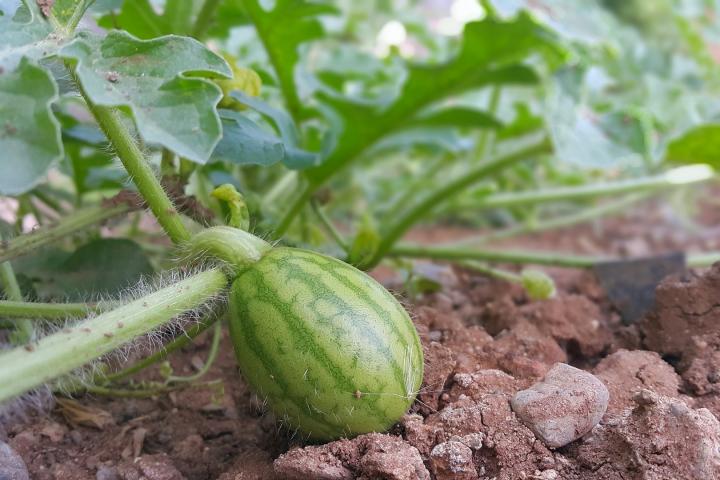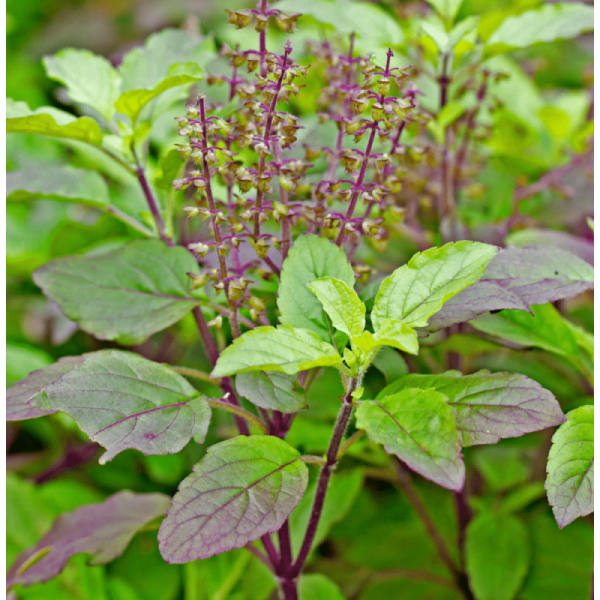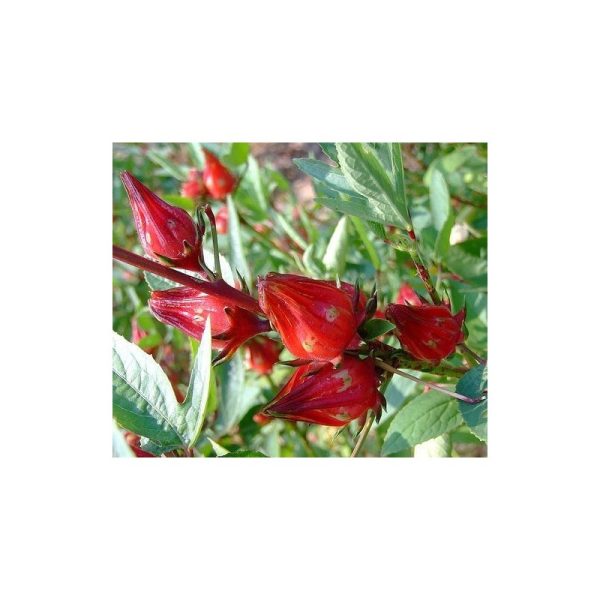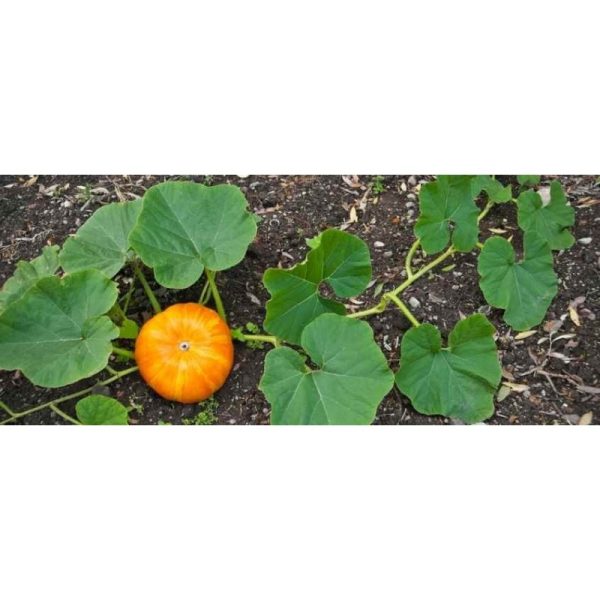Planting, Growing, and Harvesting Watermelons
Everyone seems to love juicy watermelon in the summertime. Native to Africa, melons require warm temperatures and a long growing season. By late summer, they should be just about ready to harvest! Here’s how to grow and harvest watermelons in your garden.
About Watermelons
Because watermelons need a long period of warm weather to grow well, they tend to be more popular in warmer climates with long growing seasons. However, gardeners in colder climates can still have success in growing watermelons by starting seeds indoors or purchasing young plants from a nursery, and by growing shorter-season varieties. Depending on the variety of watermelon, it can take between 70 and 100 days to go from planting to harvest.
When to Plant Watermelons
- In cool climates with short growing seasons, start seeds indoors 2 to 3 weeks before your last frost date. Plan to transplant seedlings into the garden about 2 weeks after that date or when the soil has warmed to at least 65°F (18°C).
- In warmer climates with long growing seasons, sow seeds directly outdoors 1 to 2 weeks after your last frost date, as long as the soil temperature has warmed to at least 65°F (18°C).
- Young watermelon plants can also be bought from nurseries. Plant these after there is no longer a chance of frost occurring; they are very tender. Watch the local forecast and err on the side of caution! Consider laying black plastic over your planting area in order to warm the soil even more.
- Tip: Starting with young plants can result in an earlier harvest (usually up to 2 weeks earlier), so consider buying young plants particularly if you live in a cooler climate.
Choosing and Preparing a Planting Site
- Amend soil with aged manure, seaweed, and/or compost before planting. Watermelons are heavy feeders, meaning they need soil that is fertile and has a high nutrient level. Learn more about soil amendments and preparing soil for planting.
- Watermelons do best in loamy, somewhat-sandy, well-drained soil. They can struggle in soil that contains too much clay and doesn’t drain well.
- Watermelons prefer a soil pH between 6.0 and 7.5 (“slightly acidic to neutral”).
- Watermelons need A LOT of space—up to 20 square feet per plant. Their vines need room to sprawl, so plant them in a place where they won’t crowd out other crops.
- Growing the vines in raised rows, known as hills, ensures good drainage and will hold the sun’s heat longer.
- Plan to space the plants 2-3 feet apart in a 5-foot-wide hill.
- If you’re growing in traditional rows, space them at least 6 feet apart.

How to Plant Watermelons
- Sow seeds 1/2 to 1 inch deep outdoors or 1/4 to 1/2 inch deep in seed-starting pots indoors.
- Tip: To allow for more root growth, use larger starting pots than you would for most seeds. Also consider using compostable pots that can be cut away or planted directly in the garden, as this will minimize the risk of damaging seedlings’ tender roots during transplanting.
- If direct seeding outdoors, sow 4 to 6 seeds per hill, eventually thinning to 2 to 3 seedlings.
Transplanting Seedlings
- Handle watermelon seedlings with extreme care when you transplant. Their roots are very fragile, so try not to disturb the soil when removing them from pots.
- After transplanting, cover the plants with row covers to keep pests at bay. Remember to remove the row covers when you see both male and female flowers on the vine, as pollinators will need to access the flowers.
- Find even more tips for planting melons in your home garden.
How to Grow Watermelons
Watering
- Watering is very important—from planting until fruit begins to form. While melon plants are growing, blooming, and setting fruit, they need 1 to 2 inches of water per week.
- Keep soil moist, but not waterlogged. Water at the vine’s base in the morning, and try to avoid wetting the leaves and avoid overhead watering. Reduce watering once fruit are growing. Dry weather produces the sweetest melon.
Fertilizing
- If you choose to fertilize (and many do), make sure it delivers more nitrogen than phosphorus and potassium, as this will encourage leaf and vine growth. However, after flowering begins, use a fertilizer with less nitrogen to instead encourage flowers and fruit. We like to use a seaweed-based fertilizer.
Flowering and Fruiting
- Vines produce male and female flowers separately on the same plant. They often begin producing male flowers several weeks before the females appear. Do not be concerned if the male flowers fall off. The female flowers (which have a swollen bulb at the base) will stay on the vine and bear fruit.
- Blossoms require pollination to set fruit, so be kind to the bees! Learn how to support pollinators in your garden.
- As fruit is ripening, prevent rotting by gently lifting it and putting cardboard or straw between the fruit and the soil.

General Care Tips
- Mulching with black plastic or straw around the plants will serve multiple purposes: it will warm the soil, hinder weed growth, and keep developing fruits off the soil.
- Pruning generally isn’t necessary for watermelon plants, but vine productivity may be improved if you do not allow lateral (side) vines to grow and stick to the main vine. When the plant is young, just cut off the end buds as they form (before the side shoots become vines). You can also pinch off some blossoms to focus the energy on fewer melons (though it’s a challenge to kill off a potential fruit).
- ‘Sugar Baby’: 80 days to maturity. Produces 10-pound melons with bright red flesh. This variety of smaller fruit can be planted just 4 feet apart.
- ‘Sweet Beauty’: 80 days to maturity. A 2004 All-America Selection. Bears 6-pound, oblong melons with red flesh.
- ‘Golden Midget’: 70 days to maturity. Bears petite, yellow-skinned 3-pound melons with pink flesh. Good for Northern gardeners.
Watermelons don’t continue ripening after they are picked, so harvest time is important. They generally ripen over a two-week period, so keep your eye on them.
How to Tell If a Watermelon Is Ripe
Dr. Bill Rhodes, professor of horticulture at Clemson University, offers the following advice on how to tell when watermelons are ripe:
- Thump it. If the watermelon sounds hollow, it’s ripe.
- Look at the color on the top. The watermelon is ripe when there is little contrast between the stripes.
- Look at the color on the bottom. An immature watermelon will have a white bottom; a ripe melon will have a cream- or yellow-colored bottom.
- Press on it. If the watermelon sounds like it gives a little, it’s ripe. (Note: Rhodes doesn’t like this method because it can ruin the quality of the fruit.)
- Check the tendril. If it’s green, wait. If it’s half-dead, the watermelon is nearly ripe or ripe. If the tendril is fully dead, it’s ripe or overripe; it’s not going to get any riper, so you might as well pick!
- Stems should be cut with a sharp knife close to the fruit.
How to Store Watermelons
- Watermelons can be stored uncut for about 10 days. If cut, they can last in the refrigerator for about 4 days. Wrap tightly in plastic.





















Reviews
There are no reviews yet.